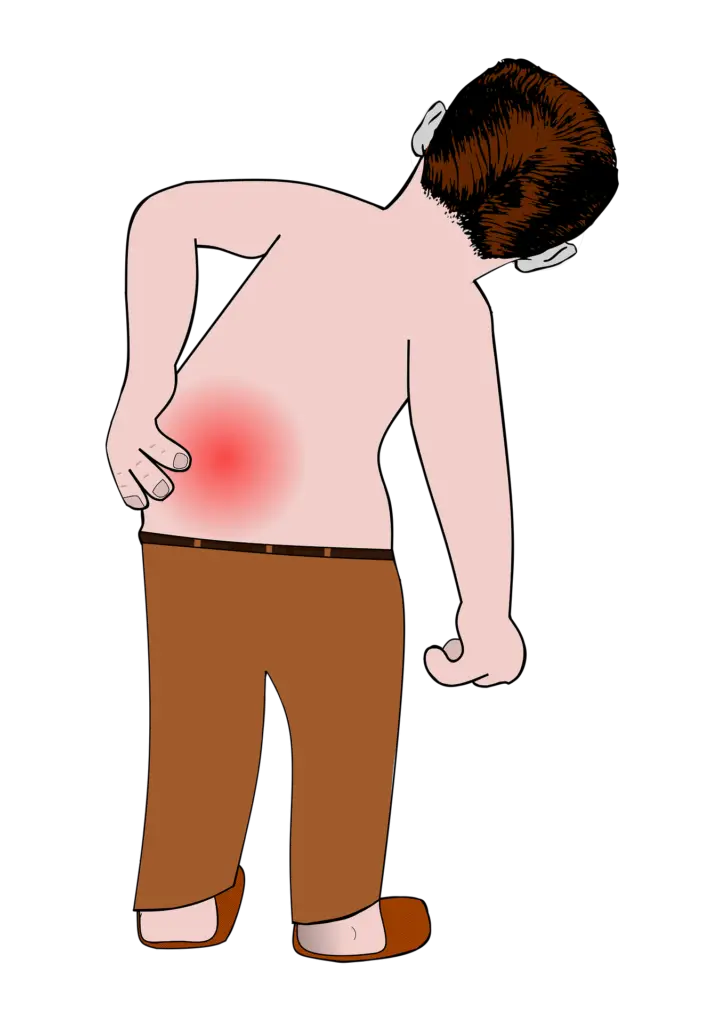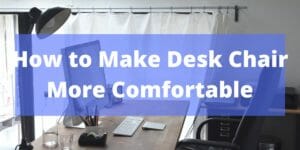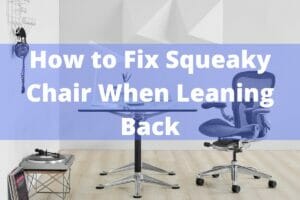Office chair with lumbar support
Back pain is the most common type of pain in the whole world. It is increasingly caused by sedentary office work or bad posture.
To alleviate and prevent back pain, you will need to pay attention to which chair you decide to buy and, most importantly, to have a proper sitting posture.
Please read Proper Sitting Posture – How to sit in a chair.
Before we talk about back pain, what causes it, what to look for when you buy a chair, sitting posture and measures you can take to keep your back healthy let us present you the two best affordable office chairs for back pain:
Table of Contents
Best AffordableOffice Chairs
1.  Sihoo Ergonomic Office Chair
Sihoo Ergonomic Office Chair
This office chair prevents back pain and relieves existing paint by letting you adjust everything to your liking.
If you’re a person that hardly finds the best sitting position, this is the chair you were looking for!
The backrest is ergonomically shaped and adapts perfectly to the back. It has integrated lumbar support that stabilizes the sensitive lower back area. It is adjustable by 1.9 inches vertically and 1.2 inches horizontally, enough for the average person to find the best sitting position possible.
This Sihoo office chair has an integrated rocking function that ensures sufficient movement. The backrest can also be locked at any angle between 90 – 125° degrees. The headrest is adjustable in height by 3.9 inches, and it provides a 45° degrees freely rotation.
The seat is comfortably upholstered so that the pressure on the buttocks is reduced. The rounded front edge of the seat promotes blood circulation in the legs. The upholstery retains its shape even after many hours. The cover is soft and hard-wearing.
The gas pressure spring has been tested several times and is particularly safe. It ensures that the height of the office chair can be adjusted by 3.9 inches. The seat can be turned 360° degrees.
The office chair can be loaded up to 330 pounds, thanks to the robust steel frame and the stable base. The nylon armrests ensure that the arms are held firmly. The plastic-sheathed castors run quietly across the floor.
The Sihoo office chair is also available in black, so if you’re not a fan of red furniture you’re safe!
Specifications
- Weight: 50.8 Pounds
- Maximum capacity: 330 Pounds
- Reclining angle: 90-120° Degrees
- Warranty: 1 Full Year
- Swivel base: 360° Degrees
- Headrest and Lumbar support: Yes, fully adjustable
- Armrests: Fully adjustable
- Reasons not to buy it: None
2. Liccx Ergonomic Office Chair
The Liccx Ergonomic Office Chair is made to support up to 440 pounds, and it is made for all body sizes.
Yes, this chair will be comfortable for a child, an average adult or a big and tall person.
The office chair is BIFMA, and SGS certified and can be loaded up to 440 pounds. You will receive a manufacturer’s warranty of 24 months, which speaks for the high quality of the office chair. Assembly is quick thanks to the step-by-step instruction manual it comes with.
The high backrest is ergonomically shaped and adapts to the natural shape of the spine. The lumbar support stabilizes the lower back. The backrest can be tilted backwards by up to 135°, this allows you to take a break and relax at any time.
The backrest is made of air-permeable mesh fabric, so you sweat less in the summer. The upholstered seat is height adjustable and can be turned 360° around. The desk chair is suitable for all body sizes and the timeless design fits harmoniously into any office interior.
The castors have a high-quality plastic coating that protects the floor from scratches. At the same time, the castors are quiet so that you can move around the room without any problems.
The Liccx Ergonomic Office Chair is a smart and stylish choice for both the work office or home office.
Specifications
- Weight: 38.2 Pounds
- Maximum capacity: 440 Pounds
- Reclining angle: 90-135° Degrees
- Warranty: 24 months
- Swivel base: 360° Degrees
- Lumbar support: Great for the average person
- Armrests: Fully adjustable 4D armrests
- Reasons not to buy it: None
How back pain develops
Over 31 million people in America suffer from back pain every single day. So if you are also affected, you are not alone.
Every year, Americans spend over $55 Billion on their back pain, either for meds or special treatment.
Increasing sedentary occupations: In the office, in the car, on the train, and at home. The regular American sits, on average, almost 10 hours every single day. Office workers even work considerably more hours on average.
One-sided activities: Monotonous and linear movements at work.
One-sided sitting posture: Certain muscle groups are permanently incorrectly strained.
Poor ergonomics: Incorrectly adjusted desk chairs, desks that are too low/ high, or poor office chair choices.
Stress is often the cause of back pain.
Such stress is called psychosomatic, i.e. physical pain caused by psychological stress. Stress in the workplace is produced, for example, by time pressure, mobbing, or fear of dismissal. Single strokes of fate and relationship problems are also frequent causes.
Stress causes the muscles to tense up. Due to evolution, the body prepares itself for attack or escape in case of danger. The same mechanism is triggered by stress at work. Short-term tension even increases performance, while long-term pressure causes the muscles to cramp. If the body is permanently on alert, painful tension is inevitable.
Psychologically ailing people are less able to cope with stress because their body sends out fewer pain-relieving messenger substances. A necessary positive attitude, therefore, helps to stay healthy. If stress is the cause of back pain, only a psychotherapist can help instead of physiotherapy, massage, and pain therapy.
Typical symptoms of back pain
Muscle tension: Muscle cramps start to hurt. The lower back is usually affected, as the lumbar region carries most of the body weight. The upper back in the thoracic and cervical spine area is also frequently affected. The result is a hunched back, and a strong forward bent sitting posture. A more neutral position with correct posture will help soothe sore muscles.
Shortening of muscles: Due to a single strain, the supporting muscles shorten while the opposing muscles become more potent. The muscle system gets out of balance and can only be corrected with difficulty through targeted back training.
Morning stiffness: Instead of being fresh and rested, sufferers, are restricted in their movements in the morning. There is hardly any fitness and endurance.
Tiredness: Caused by psychological stress and accompanied by concentration and attention deficits. Decisions are complicated, productivity decreases.
If you suffer from back pain, you should see a doctor before it becomes chronic and does not disappear. Acute pain lasts up to 6 weeks, up to 12 weeks it is subacute and then constant.
If you do not receive timely treatment, you risk overloading your intervertebral discs and a slipped disc. Pain can spread to other parts of the body. You have to interrupt your work for your treatment, in the worst case, there is a risk of permanent loss of work due to irreparable long-term damage.
What to look for in an office chair
Every office workstation must be equipped with an affordable ergonomic office chair to prevent back pain or alleviate existing complaints. Affordable office chairs are not hard to find, and it will be a great investment that is gonna save you a lot of money!
Especially at the workplace, one should not save at the wrong end to avoid high costs due to sickness-related absences from work.
When selecting a suitable ergonomic office chair, you must pay attention to the following
What type of office chair is best for lower back pain?
What is the most comfortable office chair for back pain?
Which office chairs are best for your back?
characteristics:
High backrest: For the most significant possible support of the entire back, especially to relieve the cervical spine. Chairs with high backrests support your entire back when you sit in an upright position and helps reduce pain and tension when you sit for long periods of time.
Backrest counterpressure: The backrest can be tilted backward with a little muscle power. To do this, resistance must be overcome so that you do not bounce back when sitting usually. The backrest counterpressure can be adjusted with a knob on the back. The backrest should not be too strenuous for you; then the counterpressure is still too hard for you to find a comfortable position.
Lumbar support: The lumbar spine carries the main load of the body weight. Accordingly, this is where back pain occurs most frequently when you sit for extended periods. The lumbar region is stabilized and relieved by lumbar support. It should be individually adjustable in height so that it lies in the right place on the back, and an ergonomically correct posture is possible.
Synchronous mechanism: When you lean back, the backrest moves slightly further back than the seat. By increasing the opening angle, different muscles are alternately loaded and relieved. The comfortable office chair follows the body’s natural urge to move and promotes active-dynamic sitting. You change between the front, middle, and rear sitting posture.
Seat depth adjustment: Since people are different sizes, the seat depth must be adjusted to the length of the thigh. There should be a distance of 2 cm between the front edge of the seat and the knees so that the blood flow is not interrupted. Look for these adjustable features if you are taller or shorter than the average height.
Seat height adjustment: Chairs with adjustable seat height are ideal for reducing back pain. It must be possible to adjust the height of the seat continuously to adapt it to the length of the lower legs. The feet stand entirely on the floor. The angle between the upper and lower limbs is 90°.
Inclined seat: A slightly forward inclined position is ideal. You can stand up and sit down more quickly because the intervertebral discs are less stressed. The ergonomic chair should also be able to rotate 360° to allow lateral movements. 360-degree swivel is also ideal for moving around your office without shifting into a poor posture position. A recessed seat provides even better stabilization of the spine. Basic chairs usually don’t have an inclined seat. This ergonomic feature is more common in executive chairs or task chairs.
Adjustable armrests: Armrests are essential so that the forearms can be put down. This relieves strain on the shoulders and neck and can reduce neck pain. You can lean on them when standing up and sitting down. They should be continuously adjustable in height, width, and depth to suit your own needs. Some chairs also have flip-up armrests that allow you to sit without armrests or move your chair close under the desk to save space. Padded armrests can also be very handy if you lean on your arms a lot because they prevent bruising. Chairs with a 3D armrest design are most preferable because the arms can tilt, the arm height adjusts, or it can be moved in and outward to widen the seat. These types of chairs suit a wider range of body types because they are more adjustable.
Optional:
Deep suspension: To prevent spinal compression and disc bruising, the adjustable chair should have a suspension system. When sitting down, your back is protected from severe impacts.
Headrest/neck support: This is particularly suitable for tall people whose head hangs freely in the air. It is also useful for people who quickly suffer from painful neck and shoulder tension.
High load capacity: Heavy persons need an ergonomic chair that can carry their increased body weight. Pay attention to the manufacturer’s specifications regarding the load-bearing capacity of the chair. This also means a little more space and freedom of movement.
Breathable mesh back: Sitting in the same position for a long time can leave you feeling hot and sweaty. To dry off or cool down, you will need to hunch forward in an uncomfortable position. Chairs with breathable mesh backs stay cool and comfortable even in hot weather so you never have to shift into a bad posture position.
Padded seat: A padded seat can also reduce the pressure on your hips and your tailbone. Memory foam padding is often preferred because it is so soft and conforms to your body shape to reduce hip pain. Some chairs have comfortable seats that are specially designed to help you maintain proper posture when you sit down. A mesh seat can also be pretty comfortable to sit in because the mesh fabric is usually pretty elastic which reduces tension.
Massage function: An expensive chair might include ergonomic features like a massage function in the back or in the active lumbar cushion. massage chairs are ideal for reducing stress and tension and for easing lumbar or lower back pain.
Recline features: Advanced adjustment features like backseat recline allow you to lift your feet in the air for a straight posture while you rest. Different chairs have different recline features. Some can only tilt back with tilt tension control, while others can fully recline up to 180 degrees so you can take a nap. Just check the ergonomic adjustments for height when you choose reclining chairs because not all of these chairs are high enough for taller people
For more information, please read: The only chairs buying guide you’ll ever need – by ChairsWiki
How to have a proper sitting posture
An affordable sturdy chair is only useful if it is adapted to the needs of the user.
The following basic rules must be observed:
Seat height: The correct adjustable height is reached when the angle between the upper and lower legs is 90° with your feet flat against the floor. The feet are fully supported on the floor. If the angle is smaller, the pressure on the intervertebral discs increases, and circulation problems in the legs can occur. Shorter people should mind the minimum seat height of the chair. Some chairs are not low enough to allow you to sit at a proper height and might cause chronic pain in your hips and legs.
Seat depth: Slide your bottom up to the backrest. Your back is in permanent contact with the backrest. Avoid a crooked posture. The distance between the front edge of the seat and the back of your knees is approximately 2 – 3 cm but this can depend on your body type.
Armrests: The angle between the upper and lower arms is 90°. The arms rest loosely on the table. Adjust the table height accordingly or find a chair that has adjustable armrests that have adjustable height. Flip-up arms can also be handy if you want to get out of your chair with ease.
Vary the sitting posture: Change between the front, middle and rear sitting posture to alternately strain the muscles in the upper and lower back. Avoid a rigid sitting position; even 4 seconds without movement is called static. Do not adopt a straight posture that does more harm than good.
Headrest: It is placed at the upper back of the head. The head can be tilted slightly forward to avoid overstretching. Some tilt mechanisms can tilt back further than others or allow you to move the adjustable headrest up or down.
Lumbar support: It is positioned at the right height to stabilize and relieve the lower back. However, in many models, the lumbar support is fixed and not adjustable. Some expensive chairs do however come with adjustable lumbar supports. The lumbar height adjusts up or down because they have adjustable straps that you can tighten or loosen. Other chairs come with adjustable lumbar cushions that you can move up and down. Chairs with adjustable lumbar support offer maximum comfort for people who have to sit for long periods of time.
Computer: If you are working at a PC, adjust the screen so that the upper edge is below eye level so that you can look down slightly.
Think about breaks when you stand up and stretch your feet. A walk to the canteen or outdoors stimulates circulation and provides sufficient exercise. If possible, work standing up at a height-adjustable desk.
Make sure you also read the operating instructions for the executive chair to familiarise yourself with all its functions and how it works. In large companies, an ergonomics expert or company doctor will help you to adjust the ergonomic office chair correctly. Some companies even offer their employees training.
Alternatives Office chair for women: Women are on average smaller and lighter than men. Their shoulders are narrower, and they have relatively less muscle mass. They need a comfortable chair with a soft adjustable backrest that stabilizes the back sufficiently.
Orthopaedic office chair: After a slipped disc or similar illness, you need an office chair with many ergonomic features, e.g. a split backrest. This relieves the existing pain and provides sufficient movement when sitting.
Office chair with headrest: A headrest is suitable for tall people who often suffer from pain in the neck and shoulders due to a crooked sitting posture. It should be adjustable in height and inclination.
Office chair with lumbar support pillow: If you suffer from lower back pain, your chair should have a lumbar support pillow or get a chair with built-in lumbar support It ensures a straight posture that is suitable for your back. Ideally, it should be height-adjustable so that it can be adapted to the shape of your back.
Office chair with rocker function: If you sit immobile in front of the PC, you need an office chair that encourages movement. The ideal solution is a synchronous mechanism or tilt lock that increases the angle between the backrest and seat when leaning against it.
Office chair with heated seat: If warmth helps you with tension, I recommend an adjustable office chair with a warming function.
Office chair with massage: This relaxes tense muscles and promotes blood circulation. At the same time, you save money for real massages and have a warm back on cold days.
Massage office chairs are extremely good at relieving stress.
Office stool: If you have a workplace where you have to move around a lot, a stool without a backrest may be an option for you. Your back must take over the complete support function of the upper body so that the muscles are strengthened.
For more information about proper sitting, please read: Proper sitting posture – How to sit in a chair by ChairsWiki
Further measures for a healthy back
Ergonomic office: An ergonomic design mouse and keyboard as well as the correct desk and screen height ensure a back-friendly sitting at the PC. The right lighting and green plants also noticeably reduce stress levels.
Less stress: Stress is a common cause of back problems. Psychological tension is transferred to the muscles, which become tense as a result. Find the sources of stress in your everyday life and try to eliminate them. Small power naps, which have been proven to improve motivation and productivity, are also ideal. It is best if you do the test yourself.
Sports: Whether running, fitness, gymnastics, or yoga, every form of exercise is good for your back. A doctor will not prescribe bed rest for back pain. Get a regular workout at the office. Overweight people should try to lose weight. The resulting hollow back will overload the intervertebral discs.
Back school: In preventive courses, you will identify incorrect movement patterns and replace them with new movement sequences that you integrate into your everyday life. Back-damaged people with pain receive suitable exercises.
Physiotherapy: Before back problems become chronic, you should consult an orthopaedic specialist. In most cases, you will be referred to a physiotherapist to correct imbalances and perform targeted muscle building. Heat patches and painkillers help with acute pain.
Massages: Professional massages help against back pain and tension. These relieve pain and promote blood circulation in the muscles.
Tools and tips
The following accessory products help with acute and chronic back problems:
Lumbar cushion: If your back is not sufficiently stabilized, you can use a lumbar cushion. It helps the spine to assume its natural S-shape so that you avoid postural problems.
Footrest: Small people whose feet hang in the air when sitting should consider buying a footrest. The footrest compensates for the difference in height to the floor. The intervertebral discs are less stressed.
Orthopaedic seat cushion: An orthopaedic seat cushion relieves strain on the spine and intervertebral discs.
Wedge cushion: Helps to maintain a back-friendly sitting posture.
Balance cushion: Provides more movement at work, as a balance must be maintained permanently.










